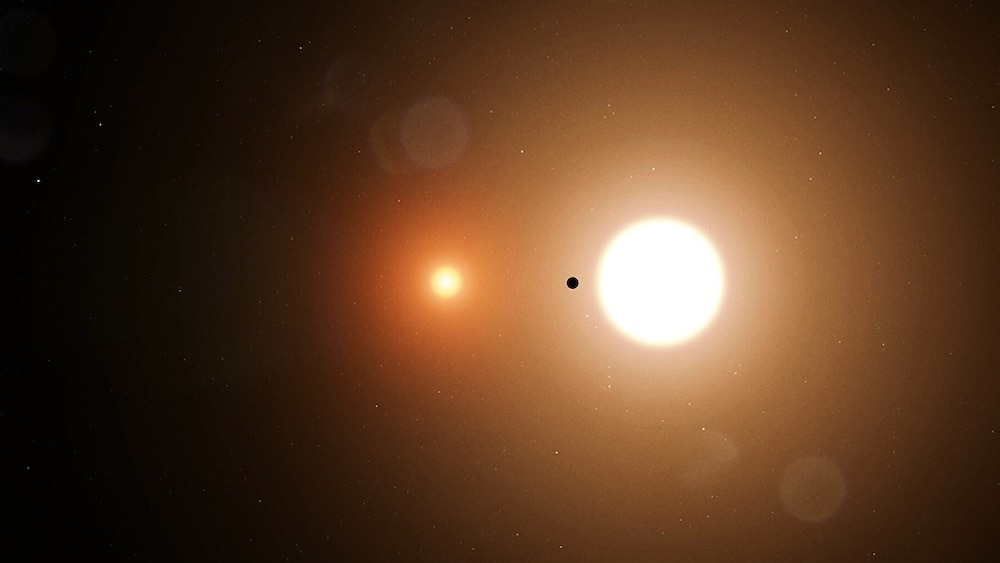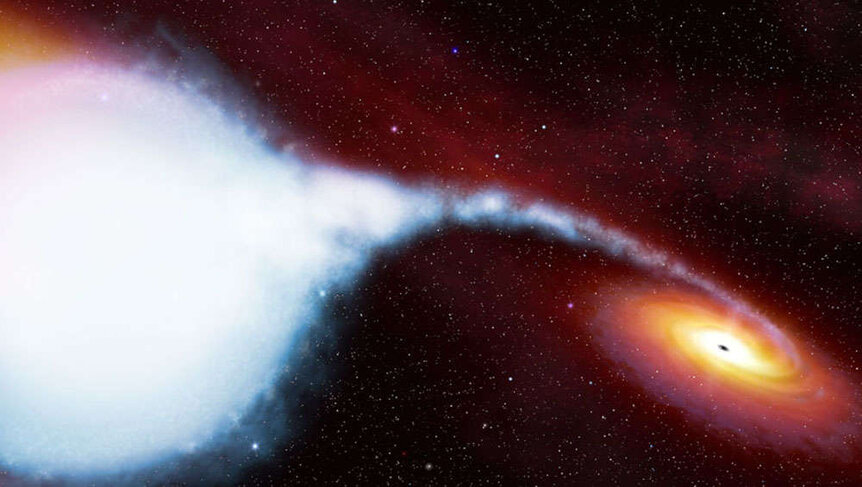Create a free profile to get unlimited access to exclusive videos, sweepstakes, and more!
MACHO Star System Has Supersonic Tidal Waves Taller Than the Sun
Each one carries enough power to destroy our entire planet.

As the Moon moves around the Earth on its periodic orbit, its gravitational influence grabs hold of water in the oceans and drags it around. The size of the tides is determined by the amount of gravitational energy at work and how easy it is to move surface material. If, for instance, all of the polar ice caps melted and covered the planet in water (like in Waterworld, streaming now on Peacock) the tides would be considerably larger than they are today.
Even in that extreme scenario, the tides on Earth would pale in comparison to the tides astronomers observed on a nearby star. Roughly 169,000 light-years from here, the binary star system MACHO 80.7443.1718 is busy spinning around itself in the Large Magellanic Cloud. As its companion spins around it, it tugs at material on the star’s surface, causing it to appear brighter or dimmer from our cosmic perspective.
The Staggering Power of Heartbeat Stars
These so-called heartbeat stars aren’t uncommon, but MACHO 80.7443.1718 is in a league of its own. Most heartbeat stars have fluctuations in brightness on the order of less than a percent. This system, however, becomes up to 20% brighter during parts of its orbit.
RELATED: Sailing the Lakes of Titan? Prepare for Rough Seas.
The smaller star orbits the primary every 32.8 days. It grabs hold of stellar material near the star’s surface and pulls it around in a circle at supersonic speeds. Unlike oceanic waves, these stellar waves move in reverse, curving away and behind as they move. And, rather than curl in on themselves and crash, they just sort of break up over time, leaving a foamy mess in their literal and figurative wake.
The relationship between these two stars is doomed to end relatively soon. That’s because the primary star is dozens of times more massive than the Sun and destined to die an early death. It’s estimated that the primary will explode in a supernova in the next few million years.
Already, the star is showing signs of the end. It has stopped fusing hydrogen in its core and moved onto helium. This process causes the star’s exterior layers to swell, becoming less dense, and more susceptible to outside influence. As a result, it’s secondary star is able to more readily grab onto surface material.
RELATED: Astronomers identify twin water worlds 218 light years from Earth
Because the scale of the star’s tidal relationship is so overwhelming, this particular heartbeat star has been given the moniker “heartbreak star.” As its secondary star whips around, it drags waves 4 million kilometers (2.5 million miles) high in its wake. The size of the waves is so overwhelming that they could crash down on our Sun and sweep it away.
Each crash of the stellar tides carries enough energy to destroy our entire planet several times over.
It’s a staggering reminder that even at its most extreme, our Earth is dwarfed by the incredible forces and structures present in the cosmos. All things considered, in comparison to these supersonic tidal waves, catastrophic climate change isn't the worst thing out there.
Catch Waterworld, streaming now on Peacock!















